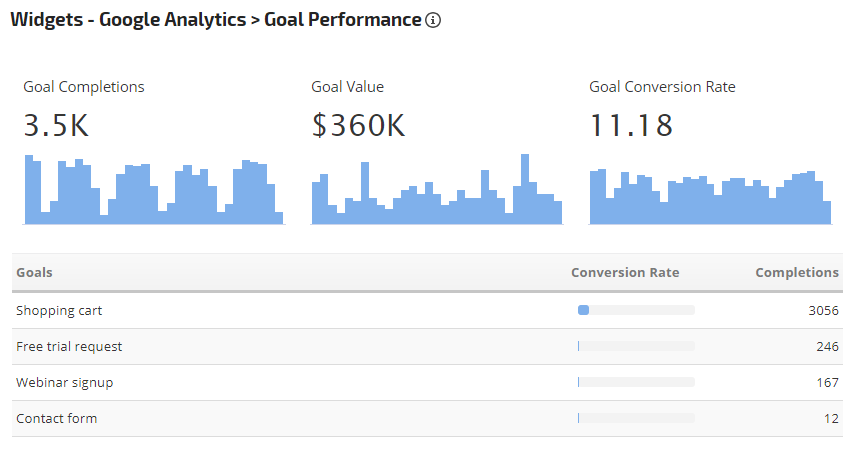Introducing the Blind Attractions: Understanding What Google Analytics Goals Can not Measure
In the realm of digital analytics, Google Analytics stands as a powerful tool for tracking and evaluating online user interactions. In the middle of its durable capacities, there exist blind spots that usually avert measurement. what data is google analytics goals unable to track. Understanding what Google Analytics goals can not determine is critical for getting a detailed view of user behavior and involvement. As we dive into the complexities of these dead spots, we reveal an intricate web of uncharted regions that hold useful insights right into customer actions and inspirations, challenging standard wisdom and shedding light on the constraints of our data-driven understanding.
Individual Actions on External Platforms
Recognizing exactly how users connect on external systems is important for optimizing on the internet techniques. Exterior platforms, such as social media sites networks, referral internet sites, and online discussion forums, play a substantial role in driving web traffic to a company's web site. By analyzing individual actions on these platforms, organizations can acquire beneficial insights right into the performance of their advertising initiatives and the preferences of their target audience.
One trick element of individual actions on outside systems is the referral resource. By tracking where the customers are originating from, businesses can identify which systems are driving one of the most traffic to their website. This information can assist firms allot their resources better, concentrating on the platforms that produce the very best outcomes.

Offline Conversions and Interactions
Examining customer behavior on exterior platforms offers useful understandings into on-line techniques; nevertheless, taking into consideration offline conversions and interactions is just as crucial for an extensive understanding of a company's overall performance. Offline conversions, such as in-store acquisitions or phone questions, play a substantial duty in many businesses' success.

Attribution Beyond Last Click
When diving into the world of electronic advertising and marketing analytics, it comes to be important to look past the solitary touchpoint of the last click for a more extensive understanding of attribution. While Google Analytics offers useful great site insights right into customer habits, relying exclusively on last-click attribution can be restricting - what data is google analytics goals unable to track. Attribution models that go beyond the last click supply a much more nuanced view of the client trip, considering all the touchpoints that result in a conversion
Acknowledgment beyond the last click permits marketing experts to appoint credit history to numerous communications along the conversion path, offering a more clear image of the efficiency of different advertising and marketing channels. By checking out multi-touch attribution designs such as direct, time degeneration, or position-based acknowledgment, organizations can much better allot their advertising and marketing budgets and enhance their techniques for optimal impact.
Recognizing the influence of each touchpoint in the conversion process is vital for making educated choices and taking full advantage of ROI. By welcoming attribution beyond the last click, companies can get deeper understandings into client habits and tailor their advertising efforts better.
Cross-Device and Cross-Browser Tracking

In a similar way, cross-browser monitoring complements cross-device monitoring by capturing user actions as they switch over between various internet browsers. Recognizing how individuals engage with internet sites on numerous browsers can help marketers maximize their on-line experiences to make certain consistency and performance across different platforms.
Qualitative Data and User Intent
Understanding customer intent via qualitative data evaluation is vital for creating targeted digital advertising techniques that resonate with the demands and choices of the target market. Qualitative information offers understandings right into the 'why' behind user actions, shedding light on inspirations, feelings, and preferences that measurable information alone can not capture. By examining user comments, comments, and communications, marketing professionals can reveal valuable information regarding individual intent, enabling them to customize their messaging, content, and offerings to better line up with click this site what their audience is seeking.
Qualitative information likewise aids in comprehending the context in which users engage with a web site or application. This contextual understanding enables marketing professionals to produce even more customized and pertinent experiences, ultimately driving higher involvement and conversion prices. By diving into customer intent via qualitative data evaluation, services can gain a deeper understanding of their target market, bring about a lot more efficient advertising techniques that meet individuals' demands and assumptions.
Verdict
Finally, Google Analytics objectives have resource restrictions in determining user behavior on exterior systems, offline conversions, attribution past last click, cross-device and cross-browser monitoring, and qualitative data connected to customer intent. what data is google analytics goals unable to track. It is necessary for companies to be mindful of these dead spots in order to supplement their data evaluation with other devices and methods to gain a much more comprehensive understanding of their target market and improve their overall electronic advertising approaches
By evaluating user habits on these platforms, services can acquire important insights right into the performance of their advertising and marketing efforts and the choices of their target audience.
Evaluating user actions on external systems gives beneficial insights into on-line strategies; however, considering offline conversions and interactions is just as crucial for a detailed understanding of a company's total performance.In digital advertising and marketing analytics, relocating beyond last-click acknowledgment to explore cross-device and cross-browser tracking is crucial for gaining a holistic understanding of user interactions across numerous systems and tools. By assessing customer comments, comments, and interactions, marketing experts can reveal useful info regarding user intent, allowing them to customize their messaging, web content, and offerings to better align with what their audience is looking for.
By diving into user intent via qualitative information analysis, businesses can obtain a much deeper understanding of their target audience, leading to a lot more effective marketing approaches that satisfy users' expectations and needs.